Etsy Launched an Artisans Collective for Indigenous Peoples' Day—And We Can't Wait to Shop the Stunning Handmade Jewelry
As part of the Uplift Makers Program, the collective provides Indigenous artisans with resources to overcome barriers to sustaining a successful business.
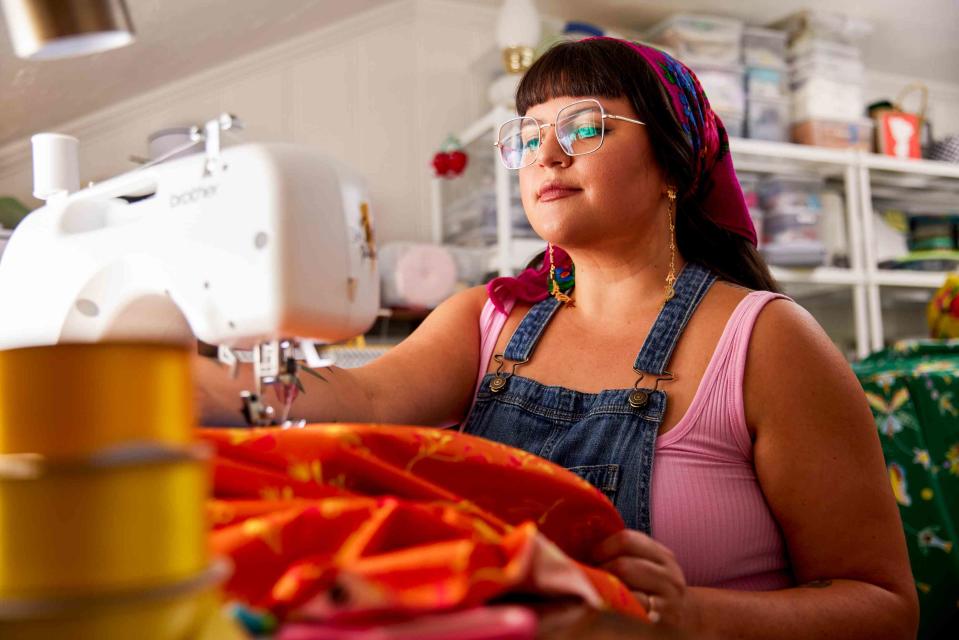
Brandon Smith
In North America today, there is an estimated 2.7 million people who identify as Native American in the United States and nearly 1.7 million in Canada. Although Native American Heritage Month is typically celebrated in November in the U.S., the recent reclaiming of Columbus Day has offered an earlier opportunity to acknowledge the contribution of Indigenous peoples throughout the Americas.
In honor of Indigenous Peoples' Day on October 10, Etsy is expanding its Uplift Makers Program with the addition of the Indigenous Artisans Collective, which features shops from Indigenous makers affiliated with 10 Indigenous groups across the United States and the First Nations of Canada. This is the fourth community joining the program—following the launches of the Gee’s Bend Quilters, Gullah Basket Weavers, and Afghan Refugees Collective—all in partnership with Nest, a non-profit that supports sustainable growth and inclusion in the global craft market.
:How to Put Your Money Back Into Native Communities on Indigenous People's Day (and Every Day)
Etsy's Uplift Makers Program offers an array of business and brand-building activities to increase the visibility of culture-inspired online craft companies. From digital marketing training to professional photography, the program delivers a comprehensive suite of resources to address barriers new business owners face when trying to showcase their talent and reach digital customers.
The Indigenous Artisans Collective is more than just a pop-up shop. It features behind-the-scenes stories from the makers and lets customers support the important role that handicraft plays for these creators’ families and communities.
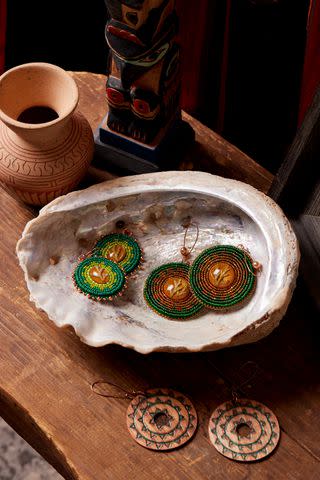
Earrings by Jennifer Reeder, Photo by Brandon Smith
From beadwork to woven wear, these keepsakes are one of a kind. “I’m excited to showcase my beadwork because I learned this skill from the elders in my family,” says Oklahoma-based Etsy shop owner Jennifer Reeder of Oklahoma Thirty Nine. “As a child, I would sit around the table with my family to watch them create beautiful beaded jewelry and regalia." Reeder's work is a "more modern take" on the traditional beadwork she learned growing up, she says, but it is still deeply connected to her roots. "This is my way of honoring family traditions while upholding cultural beliefs that have been passed down through generations,” she says.
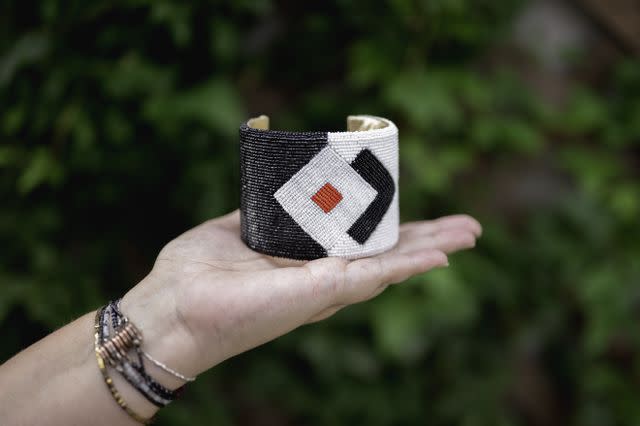
Bracelet by April Toledo, Photo by Renee Cornue
An official member of the Indian Arts and Crafts Board, April Toledo of the Etsy shop Juniper Dreams says that she not only hopes to spread appreciation of Native art forms, but that she also wants to make it easier for Native Americans who don't live near many craft makers to be “able to find Native American products without traveling hundreds of miles.”
While many of the artisans featured specialize in beadwork, each item brings a unique flair. Kathryn Hopkins of the Cattaraugus Indian Reservation in Western New York uses sea coral, heart, and quill motifs in her earrings for her Etsy shop HousofHopkins. In her work, buyers will notice a raised beadwork style that sets her work apart from the flat beadwork commonly used by other nations.
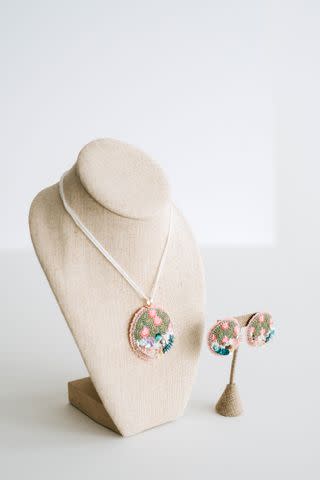
Necklace and Earrings by Kathryn Hopkins, Photo by Brooks and Co.
Although Hopkins is now based in Texas, Hopkins' design inspiration also incorporates the Iroquois influence from her youth around the Buffalo, New York area. As a Native American, a Veteran, and a Gold Star Spouse—she lost her husband in military service—Hopkins says that this program represents a pathway for healing. “I have come a long way from where I was and now look forward to where my design will take me,” Hopkins shares.
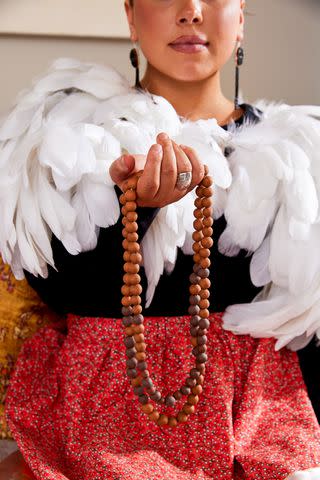
Necklace by Tayler Gutierrez, Photo by Brandon Smith
Tayler Gutierrez, a new vendor to Etsy, is enrolled with the Cherokee Nation of Oklahoma. Her antler earrings and clay necklace are sure to be popular.
Another featured maker, Samantha Jacobs, is known for her moccasins, but her foray into hats and Christmas ornaments are well-timed for the winter. Each item puts a modern twist on traditional artwork that brings the past, present, and future all into full view. “Being able to share the beadwork with a broader audience—not just with Native Americans, but with the public—I hope that my art can be used as a platform to educate the public about who we are, where we come from, some of our cultural norms, and some of our beliefs,” Jacobs says.
Through the Indigenous Artisans Collective, Etsy and Nest facilitated the launches of over a dozen individual Etsy shops for Indigenous makers across the U.S. and Canada, most of which are owned by women. This means that the Etsy program not only represents an opportunity for more representation of Indigenous art, but it also directly leverages the creator economy to close the Native American pay gap.
According to a September 2021 report from the National Women’s Law Center, “Among full-time, year-round workers, Native American women are typically paid only 60 cents for every dollar paid to white, non-Hispanic men.” That gap roughly costs Native women $1 million U.S. dollars over a lifetime.
Entrepreneurship, particularly through the scalability of online platforms, opens the possibility of financial independence for artisans and cultural workers who may otherwise struggle on the brick-and-mortar market. With the launch of the Indigenous Artisans Collective on Etsy, these makers can reach people around the world—making “buy local” a more global experience.
For more Real Simple news, make sure to sign up for our newsletter!
Read the original article on Real Simple.

